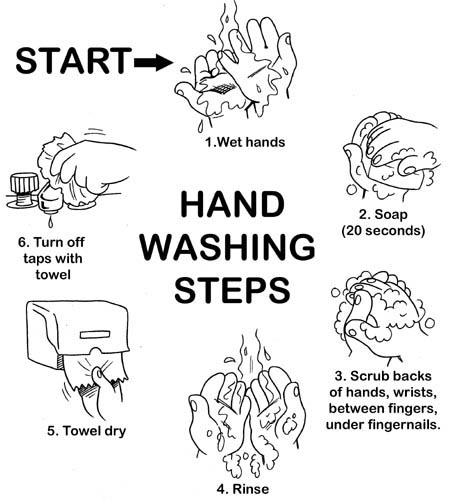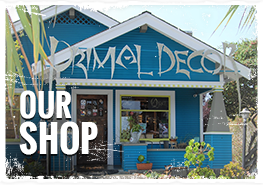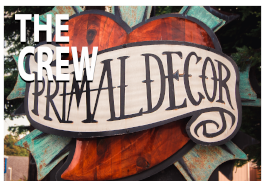Aftercare
The first step in any aftercare routine is to wash your hands!
Most infections and other complications are caused by dirty fingers.

Oral Piercing Aftercare
Oral aftercare is not just for tongue piercings, but also for any lip piercings, such as a philtrum or monroe. This aftercare should be followed for the first 30 days after receiving your new oral piercing.
Swelling:
Oral piercings swell quite a bit, and can last up to 3-7 days. In some cases, swelling may reoccur up to 30 days after being pierced, so it is important to keep the original jewelry in during this crucial healing time. After 30 days, we suggest returning for a downsize on your jewelry.
Things that can help with the discomfort of swelling are:
- Ice: crushed ice is easier to deal with, especially for tongue piercings.
- Anti-inflammatories: OTC Ibuprofen or Naproxen Sodium (taken according to package directions) can help with swelling and pain associated with oral piercings.
Rinsing:
We suggest for the first 30 day prior to your downsize that you rinse your mouth with saline or distilled water. Rinse approximately 15-20 seconds. This will take place after eating, smoking, oral contact, or drinking anything other than water.
Oral Hygiene:
We suggest maintaining good oral hygiene when healing an oral piercing. We do not suggest mouthwash as a form of aftercare. If you like using mouthwash, make sure you have a non-alcohol based mouthwash and do not overuse the product.
Diet:
Especially with a tongue piercing, chewing can be difficult. Soft, cold foods are best for the first 3 days. Avoid hot or spicy foods.
Tips:
Tooth enamel loss and gum recession are potential complications with oral piercings and paying with the jewelry brings this about more readily. In the case of tongue piercings, it is good to brush your tongue ring as well as following good oral hygiene.
Non-Oral Piercing Aftercare
Basic Cleaning:
- Wash your hands thoroughly prior to cleaning or touching your piercing.
- Wet the end of a q-tip with saline or distilled water.
- Starting at the base of the piercing and moving outwards, gently remove any debris from the jewelry using the q-tip.
- The focus should be to clean the jewelry and the area around the piercing, and to not pick at the piercing itself.
- Take the dry end of your q-tip and dry around the piercing and both sides.
The “crusties” are a normal part of the healing process of a new piercing and it’s important to never pick them. If they do not come off during the cleaning process, then they should be left alone.
Showering:
It is important to shower daily when healing a piercing. Avoid washing your piercing with soap; however, do wash around the areas of a piercing.
- When you are about to get out, let the hot water run over your piercing. Do not spray water forcibly on the piercing, but rather let the stream of water run gently over your piercing.
- When you are out of the shower, gently dry around the piercing and clean off any loose “crusties” left behind with a dry q-tip.
Hot Compressing:
Hot compresses are not necessary to do daily, but can be done when your piercing is experiencing complications, or has experienced trauma. It can be done in place of cleaning.
- Heat saline or distilled water as hot as you can stand. Pour the water over gauze, a cotton round (not ball), a sanitary napkin, or a chamomile tea bag.
- Compress your piercing gently for 10-15 minutes. Dry off your piercing with a q-tip. If you decide to use a chamomile tea bag, rinse off any tea residue, then dry.
- If your piercing feels sore or uncomfortable after a hot compress, it’s acceptable to cold compress for 10 minutes when you are finished hot compressing.
What Not to Do!
- Never touch, twist, rotate, move, or play with jewelry.
- Never use alcohol, hydrogen peroxide, antimicrobial soap, or Neosporin.
- Never submerge your piercing in pools, hot tubs, oceans, rivers, or lakes during the duration of the healing process.
- Never take out your jewelry during the healing time, unless told to do otherwise or abandoning piercing.
- Never let the piercing come in direct contact with pets or other animals during the healing time.
Piercing Healing Times:
| Piercing | Age | Approx Healing Time: |
| Earlobes | 7+ | 3-4 Months |
| Outer Cartilage | 13+ | 8-12 Months |
| Eyebrow | 14+ | 3-4 Months |
| Nostril | 14+ | 8-12 Months |
| Conch/Rook/Tragus/Daith/Fwd Helix | 14+ | 8-12 Months |
| Septum | 14+ | 3-4 Months |
| Navel | 15+ | 6-12 Months |
| Lip | 16+ | 3-6 Months |
| Industrial | 17+ | 8-16 Months |
| Tongue | 18+ | 1-2 Months |
| Bridge | 18+ | 6-12 Months |
| Nipple | 18+ | 8-16 Months |
| Dermal/Surface | 18+ | 8-16 Months |
| Basic Genital | 18+ | 1-3 Months |
All healing times are approximate.
Everybody is different. Some people take longer to heal than others. Please feel free to call or come in if you have any questions about your aftercare.
Please see FAQS for piercing complications.
Tattoo Aftercare:
What you’ll need:
- Gentle soaps such as Dr. Bronners or Baby Shampoo.
- Tattoo ointment such as Primal Decor brand, breathable oils like coconut or jojoba, Emu Oil. There are lots of brands on the market. Avoid Petroleum based items as they will not allow your tattoo to breathe.
- Gentle lotion such as Curel or Lubriderm.
Tattoo Aftercare:
- Always wash your hands thoroughly before and after cleaning your new tattoo.
- Remove the bandage after 1 hour.
- Gently wash your tattoo with mild soap. Do not scrub, and use lukewarm water and antimicrobial soap to remove any excess ink or dried blood.
- Gently pat your tattoo dry with a clean paper towel. We suggest Viva brand–they’re softer. Allow your tattoo to air dry for an additional 20 minutes.
- Apply a thin layer of tattoo ointment. Do not rebandage. Continue to apply ointment 3-5 times a day, or whenever your tattoo feels dry.
Other Tips:
- Healing time is usually 2-3 weeks. It’s normal for the tattoo to form a colorful layer of skin that peels off. This does not mean the tattoo ink is coming out.
- Do not pick or scratch no matter how itchy it gets while healing. Doing so increases your chance of infection and can cause scarring.
- Keep your healing tattoo out of direct sunlight. Once a tattoo is healed, you should apply sunscreen to protect your new artwork from sun damage for the entire life of your tattoo.
- Avoid pools, oceans, recreational waters, baths, ect., until your tattoo is fully healed: showers are a-okay!
- If you are an animal lover please make sure to avoid animals touching it.
- If you are showing any of the signs of infection please see your medical professional. Signs and symptoms of infection include, but not limited to, redness, swelling, tenderness of the procedure site, red streaks going from the procedure site, temperature, or purulent drainage from the procedure site and/ or secretions.
If you have any questions, please feel free to contact us at (707) 445-2609.



